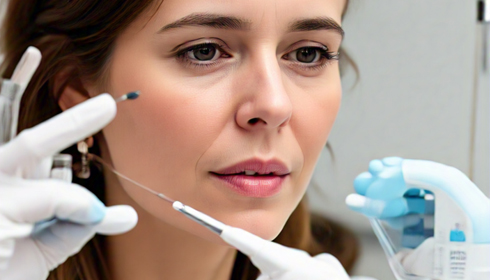
New Nanopore-Based Sensors Can Transform Medical Testing: Reserachers
Scientists at the University of California, Riverside (UCR) have developed a novel nanopore-based diagnostic tool capable of detecting diseases at the single-molecule level. This innovation has the potential to revolutionise healthcare by allowing for faster, more precise diagnostics than current approaches, which frequently require millions of molecules to produce relevant data.
"At the moment, detecting illnesses requires millions of molecules. We're demonstrating that useful data can be obtained from a single molecule," said Kevin Freedman, an assistant professor of bioengineering at UCR and the main author of a paper published in Nature Nanotechnology. "This level of sensitivity could make a real difference in disease diagnostics."
At the heart of this technology is a nanopore, a minuscule aperture that allows molecules to pass through one at a time. The circuit receives biological samples as well as salts that break down into ions. As molecules like DNA or proteins travel through the nanopore, they diminish ionic flow, resulting in quantifiable electrical signals.
Freedman says, "Our detector measures the drop in flow that happens when a protein or piece of DNA passes through and stops the flow of ions."
Unlike typical sensors, which rely on external filters to remove background noise, nanopores serve as both a sensor and a filter, conserving important chemical signals while minimising interference. This dual function improves the precision and reliability of diagnostics.
The potential uses for nanopore-based diagnostics are transformational. Freedman envisions portable diagnostic kits that are no larger than a USB drive and can diagnose illnesses in 24 to 48 hours—significantly faster than present procedures, which can take days.
"Nanopores offer a way to catch infections sooner—before symptoms appear and before the disease spreads," Freedman told me. This rapid detection is especially important for quickly spreading infections since it allows for earlier intervention and control.
Beyond diagnosing illnesses, nanopore technology has the potential to boost protein research by analysing small structural changes between proteins. Such precision is critical, as even minor differences in protein structure can have a major influence on health.
"Current diagnostic tools struggle to distinguish between healthy and disease-causing proteins," he said. "Nanopores allow us to study proteins in ways that weren't possible before."
The method is also getting closer to attaining single-molecule protein sequencing, a long-term goal in biology. Protein sequencing sheds light on the implementation and modification of genetic instructions in real time, in contrast to DNA sequencing.
"There's a lot of momentum towards developing protein sequencing because it will give us insights we can't get from DNA alone," Freedman told reporters.
Freedman's team is sequencing individual proteins with support from the National Human Genome Research Institute. This research has the potential to make molecular diagnostics a cornerstone of personalised medicine, allowing early illness identification and targeted therapies.
Freedman believes that nanopore technology will soon become a common tool in research and healthcare. Standard diagnostic kits for use at home or in clinics might integrate the technology as it becomes more affordable.
"I'm confident that nanopores will become part of everyday life," Freedman told reporters. "This discovery could change how we'll use them moving forward."